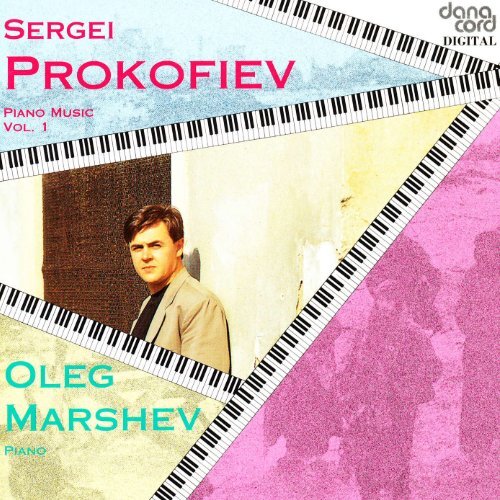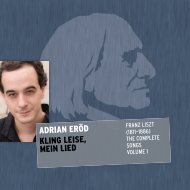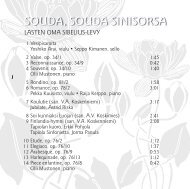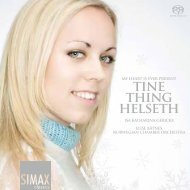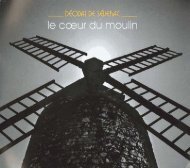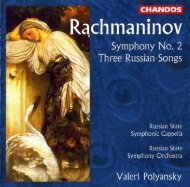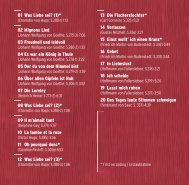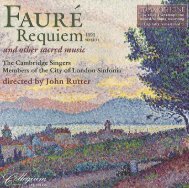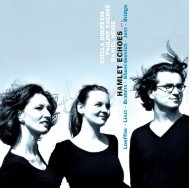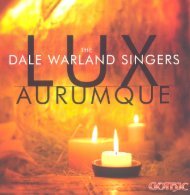PnoKc>FIEV
PnoKc>FIEV
PnoKc>FIEV
You also want an ePaper? Increase the reach of your titles
YUMPU automatically turns print PDFs into web optimized ePapers that Google loves.
SERGEI<br />
_ ,rr ll llI<br />
II ttt<br />
PnoKc><strong>FIEV</strong> NN<br />
#<br />
i!<br />
:.8<br />
q<br />
V,<br />
i
Sergei Prokofiev<br />
0se1 - 1es3)<br />
Sonata no. 6 in A-maj or, Op.82 zz,za<br />
[1 ] i AllegromoderatoS.00<br />
[ 2 ] ii Allegretto 4i3.l<br />
[ 3 ] iii Tcmpo divalzerlentissimo8rTS<br />
[ 4 ] iv Vivace 6:29<br />
Is]Dumkaiio8<br />
Visions Fugitives, Op. 22 zt, s<br />
[6]I LentamenteT.'28<br />
[ 7 ] ll Ardante 7.'15<br />
[ 8 ] III Allegretto 0.'53<br />
[ 9 ] IV Arimato - Pii sostenuto li07<br />
il01 V Molto giocoso 0.21<br />
[1U VI Con eleganza 0iJ1<br />
[12] \/II (Arpa) Pittoresco 2]08<br />
[13] VIII Commodo - Menomosso 7r75<br />
[14] IX Allegrettotranquillor]s8<br />
[15] X Ridicolosamente 7r0J<br />
[16] Xl Con vivaciti 7:04<br />
[17] XII Assai moderato 7:39<br />
[18] XIII Allegretto 1156<br />
[19] XMcroce 0rSS<br />
[20] XV Inquieto 0i,13<br />
[21f XVI Dolelte2:oo<br />
[22] XVII Poetico /116<br />
[23] XVIII Con una dolce lentezza l:23<br />
[24] )(JX Presto agitatissimo e molto accenfiato 0:37<br />
[25] XX Irnto 2i-t1<br />
Sonata no. 7 in B-flat major, Op. 83 ra,to<br />
126l i Allegro inquieto - Andantino 252<br />
[27] ii Andante caloroso 7:12<br />
[28] iii Precipitato 3:21<br />
Oleg MarsheY, Piano<br />
2
lfhe gradual undermining of traditional<br />
tonal relationships that characterises late<br />
19th century music from Wagner through<br />
Liszt to Richard Strauss, Mahler and Debussy,<br />
presaged the complete breakdown<br />
of tonality in the works of Schtinberg<br />
and his pupils. This crisis may be seen as<br />
the logical outcome of increasingly<br />
highly charged Romantic expression, and<br />
it created particular problems for the<br />
Romantic instrument par excellence, the<br />
pianoforte. What the visionary Liszt had<br />
already demonstrated in his exploratory<br />
late piano works became clear to composers<br />
in the first decades of this century:<br />
dense textures and traditional keyboard<br />
virtuosity were incompatible with<br />
the new refined tonal language. The realization<br />
spawned several parallel<br />
schools: uninhibited by a strong national<br />
tradition, Debussy forged a totally new<br />
approach to piano composition and keyboard<br />
colour, elegantly avoiding the issue<br />
altogether; other composers sought<br />
refuge beneath the umbrella of neo-nationalism,<br />
an eclectic approach in which<br />
classical/romantic techniques could be<br />
adopted to individual needs (Rachmaninoff,<br />
Ravel, Albdniz etc.); others<br />
sought to impose the grand keyboard<br />
approach with some modifications on<br />
the extended harmonic language (Berg,<br />
Scriabin, Busoni); others still reacted by<br />
reducing expressive means to a bare minimum<br />
(Webern, late Schonberg).<br />
SERGEI PROKO<strong>FIEV</strong> conformed to<br />
none of these trends - and to all of them.<br />
Though his often percussive use of the<br />
keyboard may be considered anti-Romantic<br />
per se, he does not shun traditional<br />
large forms bristling with notes<br />
that demand a highly virtuoso piano technique.<br />
On the other hand he is capable of<br />
the conciseness and extreme abstractions<br />
of the minute 'Sarcasm' and'Vision<br />
Fugitives'. Yet his entire output is<br />
characterised by the brilliant sonorities<br />
and incisive rhythm typical of many of<br />
the'neo-nationalists'. He shares allthese<br />
characteristics with his great contemporaries<br />
86la Bart6k and Igor Stravinsky;<br />
together they are responsible for giving<br />
new impetus to piano music in the 20th
century. It is symptomatic that all three<br />
were also virtuosi of the first order.<br />
When Prokofiev swept forth from<br />
Russia in the wake of the Revolution of<br />
1917, he astounded audiences inEurope<br />
and the United States with his aggressive,<br />
muscular approach to the keyboard<br />
andhis complete disdainof tradition. He<br />
conformedperfectly to Western preconceptions<br />
of a'BolshevikArtist' : austete,<br />
uncompromising and totally dedicated.<br />
And whilst these traits may well have<br />
been characteristic of the man himself<br />
(he was notoriously abrasive), we see<br />
now that his style differs from that ofhis<br />
Russian predecessors less in essence than<br />
in degree: the boldness and vivid colours<br />
so typical of the Russian nationalist<br />
school may be detected in condensed<br />
form in the sardonic, concise idiom that<br />
Prokofiev made his own, often underpinned<br />
by the yearning melody and<br />
poignant harmony that reveal him as<br />
av ant - gar d e and Romantic traditionalist<br />
in equal measure. And if some of his<br />
early piano output is more uncompromising<br />
in its truculent negation oftradition<br />
and its fascination with the percussive<br />
aspects of the instrument sometimes<br />
bordering on the manic, yet his mature<br />
works are characterisedby the attempt to<br />
reconcile these contrasting schools, and<br />
lo this his music owes its unique appeal.<br />
+)<br />
Prokofiev's aim was that ofexpressingprimitiveemotionswithoutresorting<br />
to traditional romantic means, and his<br />
music may be heard as a constant quest<br />
forways of communicating directly and<br />
profoundly with his audience in a language<br />
that did not conform to a received<br />
aesthetic norm. In this respect his piano<br />
music, and in particular the nine completed<br />
piano sonatas, enshrines his most<br />
personal utterances. As a consummate<br />
pianist himself (he won the Rubinstein<br />
Prize in 1914 playing his own D-flat<br />
Concerto) it was only natural that his<br />
profoundest intuitions should be expressed<br />
in terms of his own instrument.<br />
The eleven sonatas (including two unfinished<br />
works) span Prokofiev's entire
creative career from his student years at<br />
the St. Petersburg Conservatoire in 1907<br />
to his death in 1953. In addition to these<br />
works he composed over sixty smaller<br />
piano pieces collected in groups under<br />
single opus numbers, including the "Visions<br />
Fugitives" and "Sarcasms", not to<br />
mention the transcriptions of his ballet<br />
music for "Cinderella" and "Romeo and<br />
Juliet".<br />
Yet despite their originality, can the<br />
sonatas be said to constitute a great 20th<br />
century cycle? The question is perhaps<br />
irrelevant (in his so-called "Memoirs" -<br />
New York 1979 - Shostakovich himself<br />
suggests a final summing up to Prokofiev's<br />
music is not yet possible): let the<br />
listener decide for himself as to their<br />
collective worth. But one thing seems<br />
certain: if Prokofiev consciously sought<br />
a musical idiom concordant with his<br />
principles as to musical exprdssion, he<br />
achieved this early in his career. Much of<br />
his successive production was concerned<br />
less with the evolution of this idiom than<br />
on exploiting it to the full, a hermetic<br />
trait that some interpret as a moral flaw<br />
(though perhaps justifiable on political<br />
grounds). In these terms, despite their<br />
crucial importance in the 20th century<br />
repertoire, Prokofiev'snine sonatascannot<br />
be said to embody the questing comprehensiveness<br />
which characterises the<br />
quartets of Bart6k or the symphonies of<br />
Shostakovich.<br />
As a cycle-within-a-cycle, the three<br />
so-called'War Sonatas', nos. 6, 7 (both<br />
featured on this CD) and B, are perhaps<br />
an exception to this collective theory.<br />
All three were begun simultaneosly in<br />
1939, no.6 completed in 1940, no.7 in<br />
early 1942 and no. 8 was premiered by<br />
Emil Gilels in 1944. Though each is a<br />
masterpiece with a distinct stylistic unity,<br />
all three together prove mutually enriching,<br />
displaying not only Prokofiev's genius<br />
for constantly conjuring up new keyboard<br />
sonorities (and attendantechnical<br />
problems for the performer!), but offering<br />
new, complementary perspectives<br />
on the single emotional climate that they<br />
seem to inhabit. The Sixth Sonata is the
more eccentric of the group, its schizophrenic<br />
changes of mood and extreme<br />
contrasts allowing the listener little time<br />
to orient himself in what often becomes<br />
a bewildering barrage of shifting impressions.<br />
The 3-movement Seventh Sonata<br />
is the more concise of the three. The<br />
dark, impetuous first movement is followed<br />
by a deceptive Andante caloroso.<br />
Despite its idyllic opening, this movement<br />
is laden with menace and offers<br />
little respite before the breathtaking Precipitato<br />
toccata finale. The Eighth Sonata<br />
is probably the richest of all. Though it<br />
too is characterised by strong contrasts<br />
and mercurial shifts of mood, the explicit<br />
aggression of its companion works<br />
seems tempered by reflection: the tonal<br />
language is less austere, the lyricism<br />
darker-hued, creating an atmosphere that<br />
is at once meditative and deeply resigned.<br />
Whereas the late piano sonatas encompass<br />
an infinite variety of moods<br />
within single works, the "Visions Fugitives"<br />
Op. 22 (1915- 17) represent twenty<br />
fleeting impressions, some so brief and<br />
intangible as to surprise us that they<br />
submitted to notation. These dense epigrams<br />
are in a sense "chips tiom the<br />
Master's workbench", a laboratory for<br />
experiments in a fascinating variety of<br />
form and texture comparable to Beethoven's<br />
late Bagatelles Opp. 119 and126.<br />
The brief "Dumka" was first published<br />
in the "Sovietskaya Musika" periodical<br />
in 1967. This touching 'little meditation'<br />
displays the typical elements of this<br />
traditional Ukranian folk-ballad form.<br />
*) These same Janus aspects of his<br />
music were later to acquire more complex<br />
and sinister overtones when his<br />
alleged 'formalism', along with that of<br />
Shostakovich, Khatchaturian and other<br />
leading composers, was condemned by<br />
the 1948 Congress headed by Zhdanov.<br />
Prokofiev and his colleagues were compelledto'confess'<br />
theirshortcomings in<br />
an open letter to the Union of Soviet<br />
Composers.<br />
@ Kim Sommerschield
Born in Baku in 1961, OLEG<br />
MARSHEV trained with Valentina<br />
Aristova at the Gnesin School forHighly<br />
Gifted Children in Moscow, and with<br />
Mikhail Voskresensky at the Moscow<br />
Conservatoire where he completed his<br />
performance Doctorate gaining the "Diploma<br />
with Honour" in 1988.<br />
His First Prize in the 1989 "Pilar<br />
Bayona" International Piano Competition<br />
in Zaragosa, Spain, proved the first<br />
in a series of illustrious competition victories<br />
which have confirmed Marshev's<br />
reputation as one of the most talented<br />
Russian pianists of his generation: in<br />
1990 he won First Prize and Gold Medal<br />
at the AMSA World Piano Comoetition<br />
of Cincinnati; in l99l First Prize at the<br />
Concorso Pianistico Internazionale<br />
"Citte di Marsala" andin1992 the coveted<br />
Primo Premio Assoluto at the<br />
Concorso Pianistico Internazionale<br />
"Roma 1992".<br />
In addition to engagements in Russia,<br />
Marshev has performed in Hungary, Poland,<br />
Norway,Italy, Japan, United States,<br />
Canada and Spain. 1991 saw his New<br />
York debut with a highly acclaimed recital<br />
at the Lincoln Center Alice Tully<br />
Hall which led to an invitation to give a<br />
recital at the Amsterdam Concertgebouw.<br />
Marshev's activities also extend to the<br />
recording studio: in addition to a<br />
Melodiya-CD with works by Rachmaninoffhe<br />
has recorded for Danacord the<br />
complete original solo piano music by<br />
Prokofiev (DACOCD 391 - 395) and<br />
Anton Rubinstein's Piano Concertos<br />
Nos. 3 and 4 with the Artur Rubinstein<br />
Philharmonic Orchestra conducted by<br />
Ilya Stupel (DACOCD 412).
E;#
3 "f;ift,ry,2a\N.<br />
X K@'D,""il)))<br />
DACOCD 391<br />
DIGITAL DDD] (,<br />
.j<br />
.-;<br />
.'9<br />
6<br />
;ia-;i<br />
c><br />
r) o<br />
'€><br />
-v<br />
bt<br />
&5<br />
g\<br />
?a<br />
r\<br />
]]-.o<br />
-O<br />
-O<br />
:<br />
-A<br />
-o<br />
:<br />
|r\<br />
Sergei Prokofiev<br />
(lEel, rq53)<br />
I Sonata no. 6 in A-major, Op. 82<br />
p Dumka<br />
@ Visions Fugitives, Op.22<br />
@ Sonata no.7 in B-flat major, Op.83<br />
OIeg Marshev, Piano<br />
Total playing tiilc 74:06<br />
a)'E<br />
ca F-<br />


